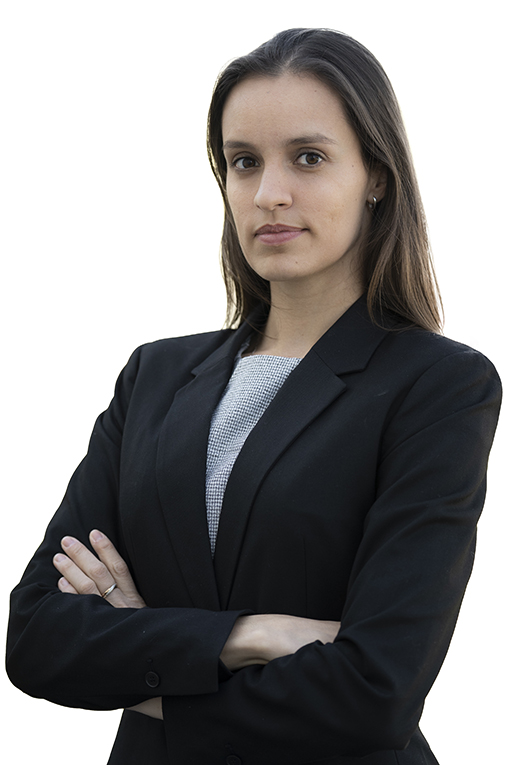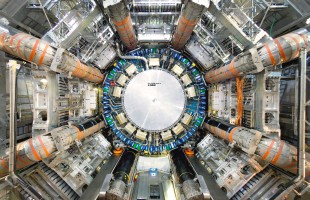Nikhef researcher Flavia de Almeida Dias has been chosen as diversity and inclusion liaison for the ATLAS experiment.
‘I have a steady job, so it’s safe for me to take on something like this,’ Nikhef researcher Flavia de Almeida Dias said of her new role within the ATLAS experiment. The collaboration meeting of the largest experiment at CERN today appointed her official liaison for Diversity and Inclusion Matters as of March 1.
‘With a temporary appointment, you are too vulnerable to deal with these kinds of sensitive issues properly. Then you are too easily that girl of inclusion and #metoo, while I am first and foremost a scientist.’
Scientific role
Dias, Brazilian by birth and affiliated with the UvA and Nikhef since 2020, is one of four people within the experiment who advise the ATLAS leadership on issues of diversity and inclusion, as well as sexual and other harassment. She recently led the so-called exotics group of the ATLAS experiment with more than 500 scientists and 80 analyses, a leading scientific role.
The subject of diversity and inclusion is not new to her. On the contrary, she also draws on her own past experiences with intrusive or condescending colleagues. And remembers the fear and the inevitable self-reproach: did I perhaps act too open-minded or unclear?
And it actually always happens when you least expect it, she says. ‘You involuntarily think that scientists are neat, educated people who do know how to behave. All the greater the shock when sometimes that turns out not to be the case at all.’
Stalked
As a student herself, aside from the endless looks and touches, she was stalked by a colleague, literally all the way home on the bus from the institute. And without knowing what she could do about it.
Dias: “I don’t wish that fear and confusion on anyone at all, and that’s the reason I’m committed to this.” She had previously participated regularly in CERN’s bi-monthly roundtables on diversity and inclusion. This was prompted by grim incidents at the lab, where posters of LGBTQ+ gatherings, for example, were invariably taken down, vandalized, or even daubed with Bible texts.
‘Someone was caught, but it still happens. In the LGBTQ+ community at the time, that was considered very threatening,” she says. Dias herself (she/her) is an open member of the LGBTQ+ community and at home in the gender-diverse world from a young age. ‘I always preferred going to gay clubs in Brazil, at least there men don’t bother you as a young woman.’
The diversity and inclusion liaisons have two roles within ATLAS. They advise management on policies for more diversity and inclusion, especially by providing hard data and figures. How do you give women and others more space, without accusing them of being put ahead of the pack? Does the administration necessarily need to know whether a member is male or female? Is gender-neutral addressing an option?
Safety course
The other topic is social safety for women and LGBTQ+ colleagues. What to do as an organization and as individuals with undesirable behavior from colleagues, leaders or subordinates? ‘I know of a group leader who simply refuses to allow a trans person in the group to speak, and that really no one knows what to do with it. That’s downright bizarre. He ignores her. Just think what that does to someone who had come for science.’
In this, the contact persons are emphatically not parties themselves but rather advisors for those who feel unsafe. On that front, she says, there is even already a very concrete action point. ‘Every member of the ATLAS collaboration is required to take a safety course, to learn what to do with emergencies and how to put on a gas mask. We are going to advocate that the same course also include the topic of social safety. About bullying and other misbehavior. Because it’s just as important for a healthy community.’

